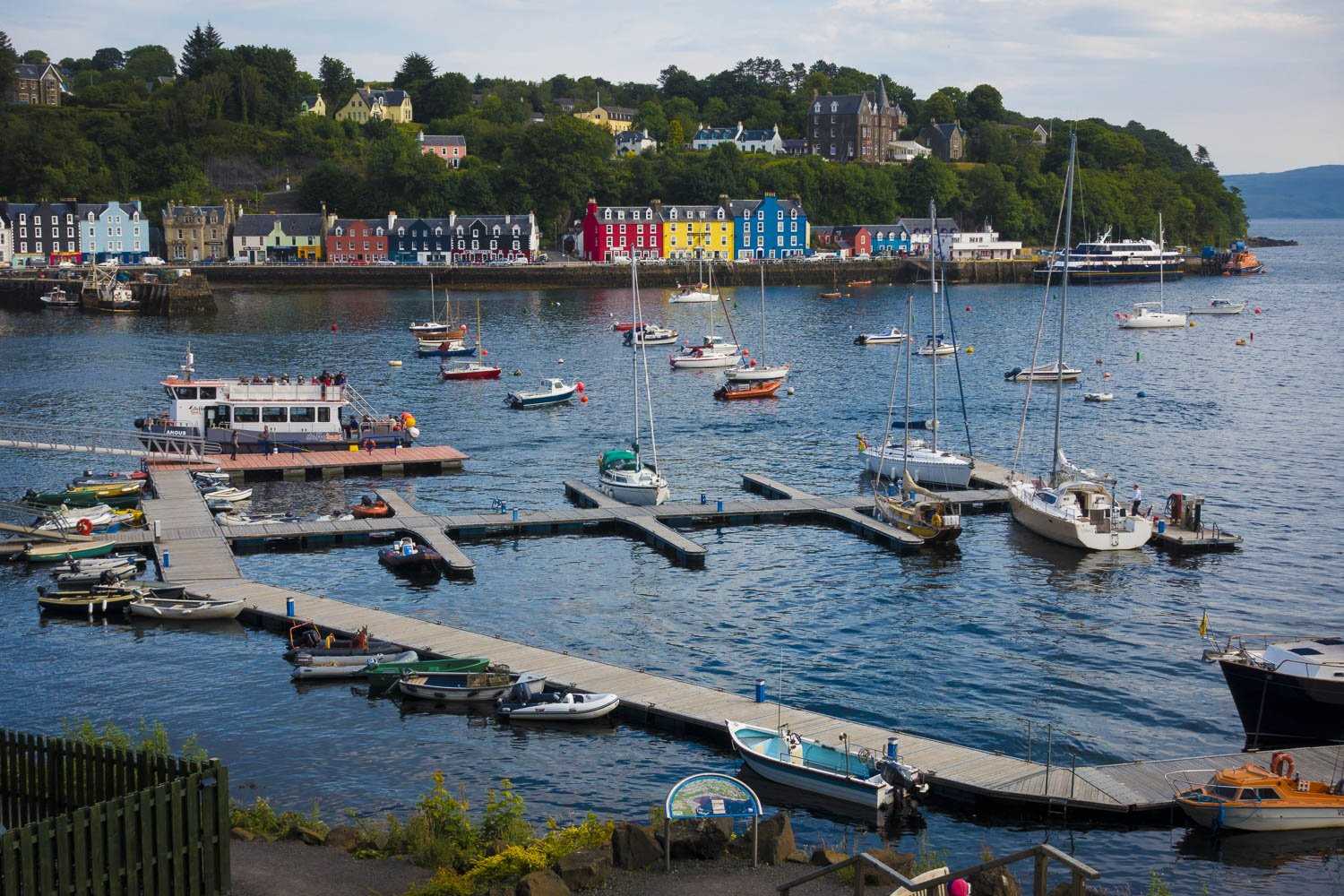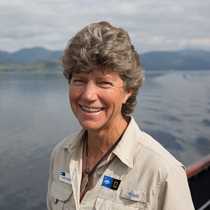The sun shone on the colorful town of Tobermory this morning, giving us a great day to enjoy the area. Shortly after breakfast, a group set off with Robin and Stewart on a hike along the coast just south of town. The coastal path goes through a lush forest dripping with moss and lichen, giving us a glimpse of what the “Atlantic rainforest” is like. Because the Atlantic Gulf Stream flows along western Scotland, the climate is relatively mild year-round, allowing for such forests to grow. As we walked, Robin pointed out the native Scots pine and oak trees. A crashing waterfall at the end of the hike provided an opportunity for Stewart to share tips on photographing moving water, including using slo-mo on an iPhone to create an interesting video.
Shortly before lunch we set sail, moving out into the Sound of Mull and headed for the Isle of Eigg. Our route took us around Ardnamurchan Peninsula, with its Egyptian-styled lighthouse on the point, the most western point of all mainland Britain. The sailing was superb, with sunny skies and gentle seas, and gannets, Manx shearwaters, guillemots, and even a few great skuas seen along the way. As we went, Stewart gave a geology talk, covering the history of geology in Scotland, some basic geologic processes, and how those processes came together to create Scotland’s landscape of today.
We put into Eigg mid-afternoon, one of the small islands of the Inner Hebrides. The entire island is a community-owned estate, purchased when the land went up for sale in the 1990s. This community buyout was part of the beginning of a land reform movement that resulted in many community-owned estates and woodlands across Scotland. Eigg’s landscape is dominated by the imposing An Sgùrr (meaning “rocky peak” in Gaelic), an igneous feature formed some 60 million years ago when lave flowed down an ancient river valley. Through time, the surrounding rock eroded away, leaving behind the more resistant basalt flow that creates the rocky peak we see today. Many explored the island on their own, while others joined Robin and Stewart for a hike up to the slopes below An Sgùrr, getting an expansive view across the sea and down to the Lord of the Glens on the shore. On our descent, we were surprised to find Andy out and about on his bicycle, and even more delightfully surprised when he pulled a bottle and glasses out of his pack, providing us with a wee dram!
Our evening sail took us from Eigg to the small village of Inverie on the mainland peninsula of Knoydart, which can only be accessed by walking or boat. We had Recap as we sailed, with Carol giving an historical overview of the Lord of the Isles, a nearly independent lordship of the western seaboard and the Hebrides that lasted from mid-12th century until their downfall in 1493. The talk gave us a foundation for our visit to the Clan Donald Centre tomorrow. Next, Robin told us about the Manx shearwaters that we’ve seen as we sailed. Almost 80% of the world’s Manx Shearwaters breed in Britain and Ireland, and 40% of U.K.’s breeding pairs nest on Rum, the island neighboring Eigg.
After dinner there was the rare opportunity to fish for mackerel off the boat. The crew pitched in, even cooking up a pan full of the delicious fish. Guests were then given the chance to visit The Old Forge pub in the village, which is considered the most remote pub of mainland Britain, or head off to a local cèilidh.









